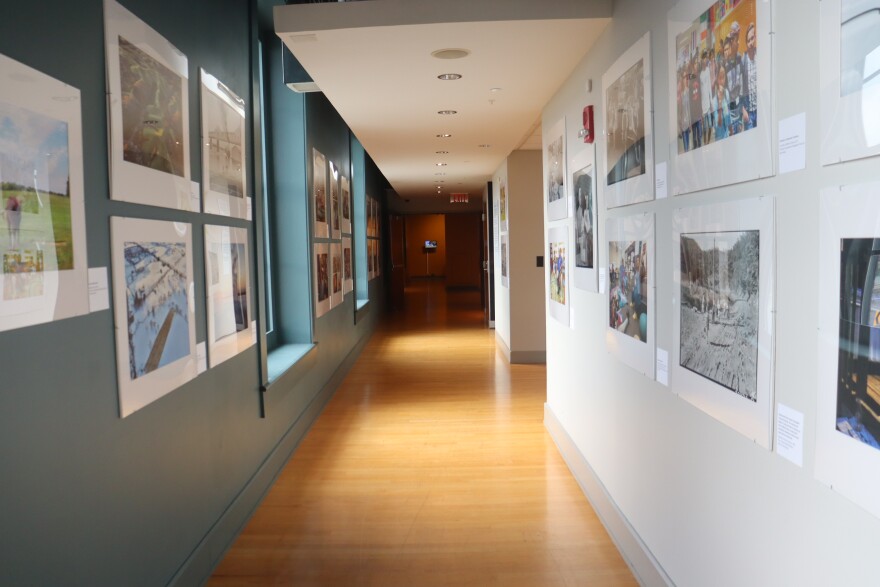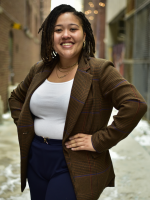Louisville native Ted Wathen left his day job in his 20s, grabbed his cameras and spent the next three years photographing all 120 counties in Kentucky with fellow photographers Bill Burke and Bob Hower. The three men had a grant from the National Endowment for the Arts, some donated film and a budget of $20 a day for food, gas and lodging.
“They gave us cameras and film, and that's what we did," Wathen said. “We lived pretty much out of our cars, and we camped. We cooked our own food a lot. I never stayed in a hotel.”
Their adventure began in 1975, and since then, Hower, Wathen and Burke have spent the last 50 years of their lives “Documenting Kentucky.” The trio recently unveiled their photography project at the Frazier History Museum in Louisville.
The exhibit “Documenting Kentucky: Three Photographic Surveys” follows their journey across the state and a later project they completed with 26 other photographers from all over the world who joined the photographic survey in the commonwealth.
After their rugged trip across Kentucky, the trio showcased their project at the Speed Art Museum in Louisville, the Kentucky Historical Society in Frankfort and the Smithsonian American Art Museum, where it remains in its permanent collection.
The exhibit features about 90 original black-and-white negatives that were scanned to make larger prints.
By 2011, the three photographers were in their 60s and they wanted to travel again. This time around, Hower said his team was going to need some help.
“We knew that we couldn't just go out [as] the same crew of three old white men, two of whom weren't even native Kentuckians,” Hower said. “[We] couldn't go out and do this again and be fair to the state and fair to the potential of this project. So we knew that we needed to be much more diverse, and so we set about recruiting younger, more diverse photographers, and we ended up with a total of 26 photographers touching this project one way or the other.”
The new crew traveled the state from 2015 to 2024, with photographers coming from four different countries to work on the project, Wathen said. They hired a researcher to gather information about each county’s geographical landscape, landmarks, employment industries and demographics.
“Our stated goal was to go into each and every one of the 120 counties in the state and try to pull images out of it in an attempt to really describe what the state is, who's there, what they're doing, what it looks like, what they look like, and so forth and so on,” Hower said.
The photographers were able to document different facets of each county, and Hower said the project turned into a “truth-telling story.”
“We didn't want to do just a show and a book about how beautiful Kentucky is and show horse farms and mountains and forests and covered bridges and all sorts of stereotypical things,” Hower said. “We wanted to dig a lot deeper than that and show some of the complexity of the beauty of the state.”
Wathen, Hower and Burke combined their work with photographs of the Farm Security Administration from 1935-1943. Photographers Marion Post Wolcott and Ben Shahn documented Kentucky’s rural and urban life during the Great Depression and the beginning of WWII as part of the national collection. Wathen said he and his team pulled the photos from the Library of Congress to showcase “a tremendous piece of history.”
There are 150 large print photos on display, documenting monumental shifts in the state’s landscape and lifestyles.
While the exhibit at the Frazier History Museum combines all three collections, the photos are not displayed in timeline order.
“We wanted to mix everything together, so you got this sense of how the state has changed,” Hower said.
Throughout the exhibit, photos of similar events are next to each other. For example, a photo of a funeral for WWII soldiers is next to a burial ceremony in 2020. In other sections, some photos were unintentionally taken of the same area, 40 years apart.
Each photo depicts a moment in Kentucky’s history, including the Ohio River flood in 1937, the Eastern Kentucky flooding in 2022, the Black Lives Matter protests in Louisville, and coal mining towns in Eastern Kentucky.
“Documenting Kentucky” is open through Nov. 9. Afterwards, the project will be stored in University of Louisville photographic archives.
“Art goes through fashions. Photography goes through fashions,” Wathen said. “We're not really concerned with the fashion. We're concerned with what is aesthetically pleasing, with what conveys information, and what you're going to want to look at now and 100 years from now and 200 years from now. We're really excited that there will be a home for this.”
The exhibit is also part of the 2025 Louisville Photo Biennial, a project that celebrates photography in Louisville, Southern Indiana and Central Kentucky.
Editor's note: The Frazier History Museum provides support to Louisville Public Media.






